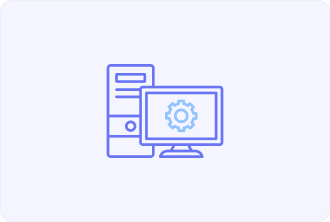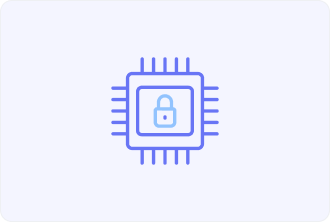Hardware Definition

Whenever computers or other digital appliances are being talked about, the term hardware always pops up. But what, after all, is this thing called hardware? In simple terms, hardware is the physical component in every computer system or electronic device that one can feel and physically set their eyes on.
These are basically blocks enabling the software to operate and execute general tasks. Computers and smartphones have become a part of our lives, and you probably know that the circuit boards, chips, and drives inside make up the hardware of the device. Roughly speaking, without these physical components, the software would have nothing to work on.
If we touch on history a little, the term “hardware” appeared several decades ago, in the 1940s, when the first machines looked like a pile of vacuum tubes and huge switches. It is easy to see that by 2024, hardware has decreased in size to a record level, while rapidly increasing its power and significantly reducing its cost, which can be easily verified by contacting the mobile app development company in the UK.
Understanding Hardware in Modern Technology
Hardware has many forms, depending on the device type. The most basic definition of hardware applies to the components where the technology resides physically in a software-based system. One thing is for sure: from your smartphone to your laptop, right up to those servers that power the Internet-all these use hardware components for correct functionality. Some of the more common types of hardware include:

- CPU – Central Processing Unit. This is the very brain of the computer, as all the instructions are processed here. Commonly, computers are equipped with either an Intel Core i7 or perhaps an AMD Ryzen processor.
- RAM-Memory. This temporary memory retains data for a very short period of time, hence allowing devices to access applications instantly at any given time. The more RAM, the greater the number of processes one can run on your device simultaneously.
- Storage devices. This category includes hard drives, SSDs, and external drives, the task of which is to store data for a fairly long period of time. The last ten years have made SSDs widely available, which has allowed them to become a full-fledged replacement for hard drives.
- Motherboard. This is the basis of the basics, a kind of basis that connects other components of the CPU, memory, and storage device.
- Graphics Card. Modules like the NVIDIA RTX 3080 GPU help gamers and professionals in Mercedes render images and process graphics data.
The hardware also doesn’t stand still: with all the development of technology, due to evolution in time changed from the 1980s, the hardware has evolved from personal computers being relatively big with slow performance to modern laptops such as the thin and powerful MacBook Pro, which are generally accessible to people. Fast developments in hardware further allow developments in the gaming industry, virtual reality, and artificial intelligence.
The Role of Computer Hardware in Today’s Devices
The term computer hardware refers to hardware that, in particular, relates to computing systems. Hardware related to computation systems ran its course from the first personal computers, like Apple II in the late 1970s, to modern sleek systems, such as the Microsoft Surface or Dell XPS. Our era, which can rightfully be called digital, owes much of its rapid development to computer equipment.
And for all systems to work smoothly and without failures, giving a chance for further progress, the elements must complement each other and generally increase productivity, while reducing costs. To perform these tasks, components of various types have been created, examples and functions of which are described in the table below:
| Component category | Examples | Functions | Purpose |
| Input regulators | Keyboards, mice, touch screens, microphones, video cameras, trackpads, stylus pens | Process user commands and convert text to a machine-readable format | Facilitate user input and interaction with the computer |
| Output devices | Monitors, printers, speakers, headphones, projectors, plotters | Show results and offer user feedback, transforming digital data into readable insights | Share processed data and feedback with users |
| Processors (CPU) | Intel Core i7/i9, AMD Ryzen, ARM processors, Graphics Processing Units (GPU) | Handle data, run instructions, and conduct calculations | Act as the “brain center” managing all computational functions and operations |
| Data storage panels | Hard disk drives (HDDs), solid-state drives (SSDs), RAM, ROM, USB drives, optical discs | Retain data for computing, providing primary and secondary storage solutions | Quick access to programs and files with long-term data retention. |
If a modern person found himself in the 1990s of the last century and received a Pentium processor for use, his surprise would know no bounds. After all, after the experience of working with quantum processors, it would be difficult to return to the framework of classical computers. This hardware revolution continues to push the boundaries of what is possible in critical industries, where healthcare app development companies for digital solutions are excelling.
We now have a completely different idea of hardware, because cloud computing allows us to no longer rely solely on home or work machines. We have the same computing power as a cloud of huge data centers. Companies like AWS and Google Cloud were leveraging enormous farms of servers to provide hardware resources remotely.
Hardware in Modern Appliances and Smart Devices
Hardware is not confined to computers and mobile gadgets. Indeed, the term can also relate to home appliances-most of which have recently gained the status of “smart.” Think of your fridge or washing machine that has gained smart status. All this has become possible thanks to the presence of hardware elements in modern devices: sensors, processors and communication tools.
From the very first microwave oven, introduced in the 1940s, to date, hardware in home appliances has undergone amazing transformations. Today, the hardware of home appliances is connected to the Internet and any web design agency in London with creative expertise can create a mobile app to control the appliances even outside the home. In return, smart thermostats learn your habits and will save money on your energy bills.
Generally, hardware-integrated home appliances are part of the whole thematic area of IoT. These devices communicate with each other and also with users, taking advantage of internet access. “By 2025, up to 75 billion IoT devices will be in use, indicating this rapid growth in hardware-integrated smart home technology.
Conclusion
Hardware is the basis of all our modern technology. The hardware has gone through radical revisions since its early computing systems in the 1940s to its ultra-compact smartphones and powerful cloud servers today. It forms a very vital part not just in computers but also in everyday appliances that make our lives easier.